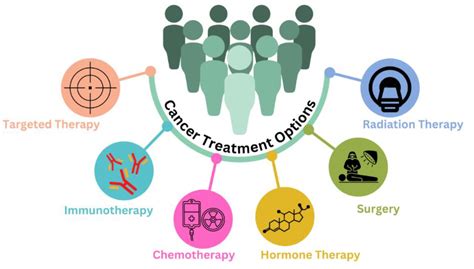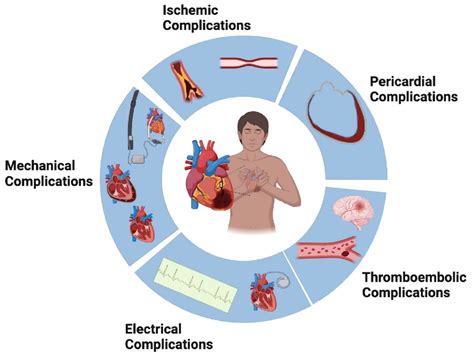Intro
Treat prolapsed anus with 5 effective methods, including lifestyle changes, exercises, and medical treatments, to alleviate symptoms and prevent further complications, promoting anal health and wellness.
Prolapsed anus, also known as rectal prolapse, is a condition where the rectum loses its normal attachments inside the body, allowing it to protrude out through the anus. This condition can cause discomfort, pain, and embarrassment, affecting a person's quality of life. Understanding the causes, symptoms, and treatment options for prolapsed anus is essential for managing the condition effectively. In this article, we will delve into the importance of addressing prolapsed anus, its symptoms, and the various treatment options available.
The condition of prolapsed anus can arise due to several factors, including chronic constipation, diarrhea, aging, and genetics. It is crucial to recognize the symptoms early on to seek appropriate medical attention. Symptoms may include a bulge or lump coming out of the anus, discomfort or pain in the anus, and difficulty controlling bowel movements. If left untreated, prolapsed anus can lead to further complications, such as fecal incontinence, rectal bleeding, and increased risk of infections.
Recognizing the need for effective treatment is the first step towards managing prolapsed anus. Various treatment options are available, ranging from lifestyle modifications and physical therapy to surgical interventions. The choice of treatment depends on the severity of the condition, the patient's overall health, and their personal preferences. By understanding the different treatment approaches, individuals can make informed decisions about their care and work towards alleviating the symptoms of prolapsed anus.
Treatment Options for Prolapsed Anus

Treatment for prolapsed anus aims to relieve symptoms, prevent further prolapse, and improve the patient's quality of life. The treatment approach may involve a combination of lifestyle changes, physical therapy, and surgical interventions. Here are five ways to treat prolapsed anus:
Lifestyle Modifications
Lifestyle modifications are often the first line of treatment for prolapsed anus. These changes can help alleviate symptoms and prevent further prolapse. Some lifestyle modifications include: - Practicing good bowel habits, such as responding to the urge to have a bowel movement and avoiding straining during bowel movements. - Eating a high-fiber diet to soften stool and reduce constipation. - Engaging in regular physical activity to improve overall health and reduce the risk of prolapse. - Maintaining a healthy weight to reduce pressure on the rectum.Physical Therapy for Prolapsed Anus

Physical therapy, also known as pelvic floor physical therapy, can help strengthen the muscles around the anus and rectum. This can improve bowel control and reduce the risk of further prolapse. A physical therapist can work with the patient to develop a personalized exercise program, which may include:
- Kegel exercises to strengthen the pelvic floor muscles.
- Biofeedback therapy to help the patient become more aware of their pelvic floor muscles and learn to control them.
- Electrical stimulation to strengthen the muscles and improve bowel function.
Surgical Interventions
Surgical interventions may be necessary for more severe cases of prolapsed anus or when other treatments have not been effective. There are several surgical options available, including: - Rectopexy: a procedure that involves attaching the rectum to the sacrum (a bone in the pelvis) to prevent further prolapse. - Rectal resection: a procedure that involves removing a portion of the rectum to reduce the risk of prolapse. - Perineal rectosigmoidectomy: a procedure that involves removing a portion of the rectum and sigmoid colon to reduce the risk of prolapse.Minimally Invasive Surgical Options

Minimally invasive surgical options are available for treating prolapsed anus. These procedures involve smaller incisions and less tissue damage, resulting in less pain and a faster recovery time. Some minimally invasive surgical options include:
- Laparoscopic rectopexy: a procedure that involves using a laparoscope (a thin, lighted tube with a camera) to attach the rectum to the sacrum.
- Robotic rectopexy: a procedure that involves using a robotic system to attach the rectum to the sacrum.
Post-Surgical Care and Recovery
After surgery, it is essential to follow a post-surgical care and recovery plan to ensure a smooth and successful recovery. This may include: - Following a liquid diet for several days after surgery to allow the rectum to heal. - Taking pain medication as directed to manage discomfort and pain. - Avoiding heavy lifting, bending, and straining to prevent further prolapse. - Attending follow-up appointments with the surgeon to monitor healing and address any concerns.Complications and Risks Associated with Prolapsed Anus Treatment

While treatment for prolapsed anus can be effective, there are potential complications and risks associated with each treatment option. It is essential to discuss these risks with a healthcare provider to make informed decisions about care. Some potential complications and risks include:
- Infection: a risk associated with any surgical procedure.
- Bleeding: a risk associated with surgical procedures.
- Bowel obstruction: a risk associated with surgical procedures.
- Fecal incontinence: a potential complication of surgical procedures.
Preventing Prolapsed Anus
Preventing prolapsed anus is crucial to reducing the risk of complications and improving overall health. Some ways to prevent prolapsed anus include: - Practicing good bowel habits, such as responding to the urge to have a bowel movement and avoiding straining during bowel movements. - Eating a high-fiber diet to soften stool and reduce constipation. - Engaging in regular physical activity to improve overall health and reduce the risk of prolapse. - Maintaining a healthy weight to reduce pressure on the rectum.Conclusion and Next Steps

In conclusion, prolapsed anus is a condition that requires prompt medical attention to prevent further complications. By understanding the causes, symptoms, and treatment options available, individuals can make informed decisions about their care. It is essential to work with a healthcare provider to develop a personalized treatment plan that addresses the underlying causes of the condition and improves overall health.
We invite you to share your thoughts and experiences with prolapsed anus treatment in the comments below. If you found this article informative, please share it with others who may benefit from this information. Take the next step in managing prolapsed anus by consulting with a healthcare provider and exploring the various treatment options available.
What are the symptoms of prolapsed anus?
+The symptoms of prolapsed anus may include a bulge or lump coming out of the anus, discomfort or pain in the anus, and difficulty controlling bowel movements.
How is prolapsed anus diagnosed?
+Prolapsed anus is typically diagnosed through a physical examination and medical history. Additional tests, such as imaging studies, may be ordered to rule out other conditions.
What are the treatment options for prolapsed anus?
+Treatment options for prolapsed anus include lifestyle modifications, physical therapy, and surgical interventions. The choice of treatment depends on the severity of the condition and the patient's overall health.
Can prolapsed anus be prevented?
+Yes, prolapsed anus can be prevented by practicing good bowel habits, eating a high-fiber diet, engaging in regular physical activity, and maintaining a healthy weight.
What are the potential complications of prolapsed anus treatment?
+Potential complications of prolapsed anus treatment include infection, bleeding, bowel obstruction, and fecal incontinence. It is essential to discuss these risks with a healthcare provider to make informed decisions about care.
